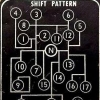How far away are we from this?
Far, far away, thanks to our society more than 50 years of valuable research have been lost since Vladimir Demikhov.
Are there any active research being done in this?
Not much. No one seems to value life enough to do it... the most recent research seems to have been done in Japan (1999).
Transferring brain to a new young body, seems rather 'ghetto' life extension but hey, if it works...
I am
disgusted, appalled and shocked that "ethical concerns" could stop such revolutionary and groundbreaking research. It could have saved lives long before the concept of cryonics and serious life extension was even viable. As always one can be ashamed to be human.
Some discussion, with considerable criticism of the feasibility (not merely ethics):
http://www.nsmatch.c...410816d46024fb1"The idea that we can "match up wires from the brain to their corresponding spinal connections" just struck me as extremely naive. I apologize for coming off as rude or arrogant but I guess I'm grumpy today. Reconnecting the stumps of severed axons from the cervical cord with axons undergoing wallerian degeneration from a decapitated body is so far from reality; we'll have robotic bodies interfacing with the CNS before this. This whole line of research seems ridiculus to me primarily for the same reasons stated by NSGY Res. In regards to SCI, neuroprotection, remeyelination, and maybe regeneration/neuronal replacement (if were lucky) are the primary targets that we MIGHT be able to develop treatments for in our lifetimes. You won't find a single paper in the literature where someone has even tried to reattach severed CNS axons, it's just not an option"I am not sure if this is exactly "Reconnecting the stumps of severed axons from the cervical cord with axons", but it reads really promising.
Guo J, Su H, Zeng Y, Liang YX, Wong WM, Ellis-Behnke RG, So KF, Wu W. "Reknitting the injured spinal cord by self-assembling peptide nanofiber scaffold." Nanomedicine. 2007 Dec;3(4):311-21.
"In traumatic spinal cord injury, loss of neurological function is due to the inability of damaged axons to regenerate across large, cystic cavities. It has recently been demonstrated that a self-assembled nanofiber scaffold (SAPNS) could repair the injured optical pathway and restore visual function. To demonstrate the possibility of using it to repair spinal cord injury, transplanted neural progenitor cells and Schwann cells were isolated from green fluorescent protein-transgenic rats, cultured within SAPNS, and then transplanted into the transected dorsal column of spinal cord of rats. Here we report the use of SAPNS to bridge the injured spinal cord of rats, demonstrating robust migration of host cells, growth of blood vessels, and axons into the scaffolds, indicating that SAPNS provides a true three-dimensional environment for the migration of living cells."I am pissed, extremely pissed to say the least, about some people's attitudes of ignorance and short-sightedness.
From the Mfoundation newsletter:
"SAPNS are able to bridge these gaps and literally re-knit the damaged tissue, while simultaneously providing a permissive environment for axonal regeneration. In hamster models where the optic tract is deeply transected, resulting in a 2mm wide wound, injection of SAPNS solution results in rapid, nearly complete repair of the injury. As well as axonal regeneration, restoration of functional vision (as demonstrated by visually guided behaviour) was observed in 75% of the experimental cohort. (Control animals treated with saline only showed no regeneration and no restoration of vision.)"
I will upload the paper in the resource sharing section if anyone wants to read it.
Edited by kismet, 10 February 2009 - 05:38 PM.
















































